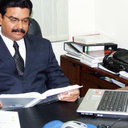Profile of infertility status of male in Dhaka city.
Parole chiave
Astratto
A cross sectional study was done to determine the important etiological profile of infertility status of male in Dhaka city. A total of eighty seven patients of male infertility were selected purposively. Among them, highest percentage of patients, 44(50.6%) were in between the 21-30 years old, 36(41.4%) had 6-10 years of post- marriage duration, 56(64.4%) patients stated that they stayed with their wife interruptedly, 54(62.1%) had primary infertility and 33(37.9%) had secondary infertility. It was found that among the patients 6(5.50%) had anti-sperm antibody, 45(40.9%) had sexually transmitted disease (STD), 41(37.3%) had varicocele, 2(1.80%) had loss of libido, 4(3.6%) had premature ejaculation and 12(10.9%) had hydrocele. It was observed that 14(12.7%) were tobacco user, 26(23.6%) were obese, 12(10.9%) had malnutrition, 7(6.4%) had exposure to heat etc and it was found that 61(70.1%) had free testosterone below the normal level and 51(58.6%) had prolactin level above the normal level. The semen analysis revealed that 48(55.2 %) had abnormal morphology of sperm, 26(29.9%) had feebly motile sperm and 27(31%) had non-motile sperm, 36(41.4%) had oligospermia, 6(6.9%) had azoospermia and 17(19.5%) had oligoasthenozoospermia.


